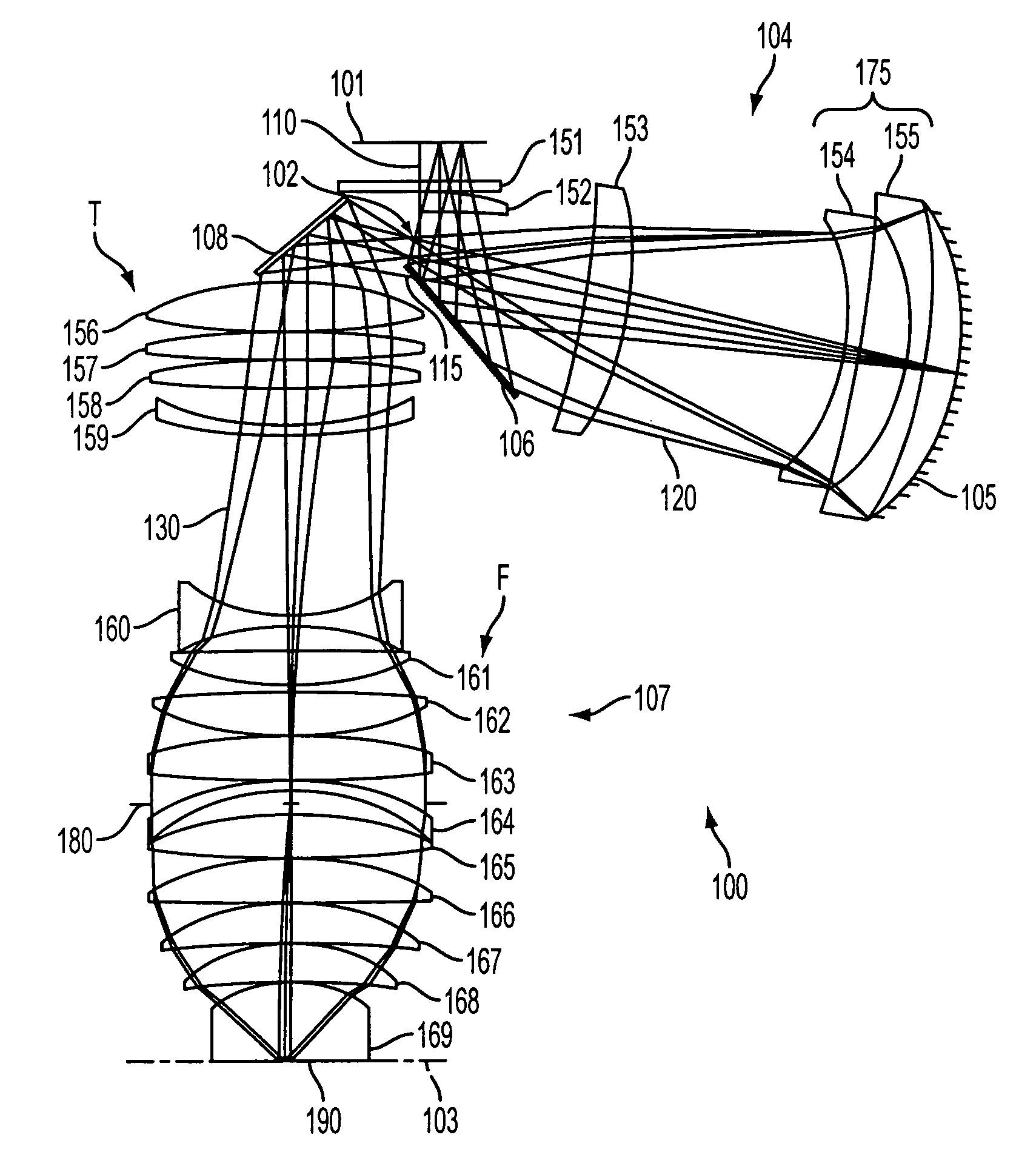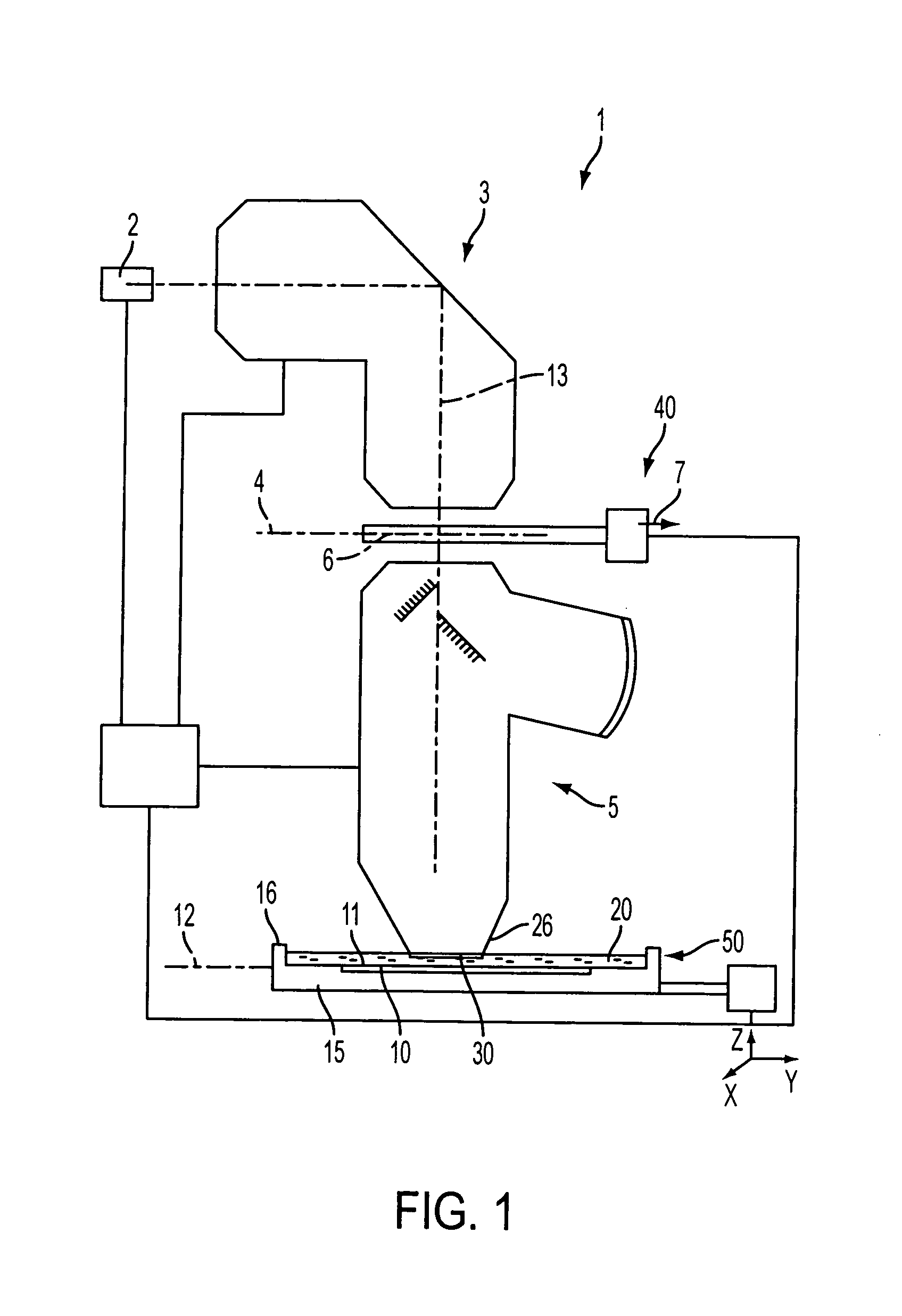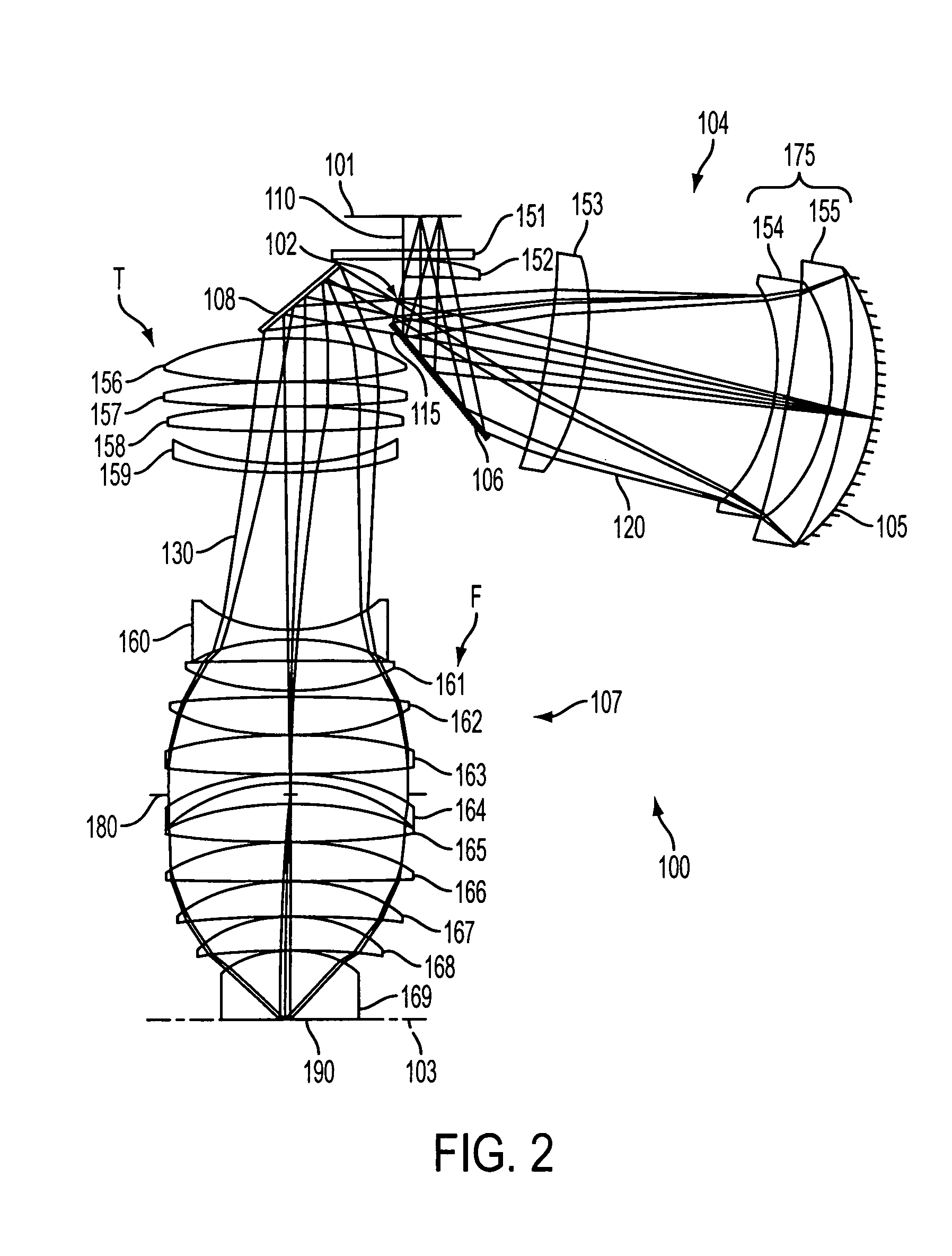Catadioptric projection objective with geometric beam splitting
a catadioptric and beam splitting technology, applied in the field of catadioptric projection objectives, can solve the problems of increasing the difficulty of providing purely refractive systems with adequate color correction, unable to meet the requirements of color correction, and the production of polarization-selectively effective beam splitter layers is difficult, so as to achieve stable mounting of optical components, increase the image-side numerical aperture, and improve the effect of projection quality
- Summary
- Abstract
- Description
- Claims
- Application Information
AI Technical Summary
Benefits of technology
Problems solved by technology
Method used
Image
Examples
Embodiment Construction
[0073]In the following description of preferred embodiments, the term “optical axis” designates a straight line or a series of straight line sections through the centers of curvature of the optical components. The optical axis is folded at folding mirrors (deflection mirrors) or other reflective surfaces. Directions and distances will be described as “image-side” if they are oriented in the direction of the image plane or of the substrate to be exposed and located there, and as “object-side” if they are oriented toward the object plane or a reticle located there with reference to the optical axis. In the examples, the object is a mask (reticle) having a pattern of an integrated circuit, it can also be another pattern, for example a grating. In the examples, the image is projected onto a wafer provided with a photoresist layer which acts as a substrate; other substrates, for example elements for liquid crystal displays or substrates for optical gratings, are also possible.
[0074]In FI...
PUM
| Property | Measurement | Unit |
|---|---|---|
| wavelength region | aaaaa | aaaaa |
| wavelength region | aaaaa | aaaaa |
| wavelength region | aaaaa | aaaaa |
Abstract
Description
Claims
Application Information
 Login to View More
Login to View More - R&D
- Intellectual Property
- Life Sciences
- Materials
- Tech Scout
- Unparalleled Data Quality
- Higher Quality Content
- 60% Fewer Hallucinations
Browse by: Latest US Patents, China's latest patents, Technical Efficacy Thesaurus, Application Domain, Technology Topic, Popular Technical Reports.
© 2025 PatSnap. All rights reserved.Legal|Privacy policy|Modern Slavery Act Transparency Statement|Sitemap|About US| Contact US: help@patsnap.com



